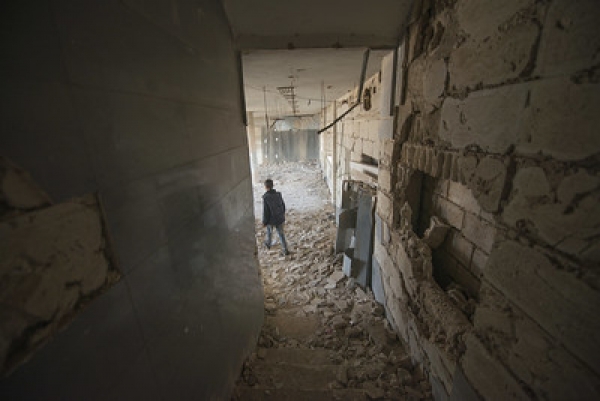Almost a decade of conflict has radically transformed the lives of Syrians. The ongoing unrest, which started in March 2011, has had a devastating socioeconomic impact, and given rise to a war economy, downgrading Syria’s status from medium human development to low human development. The report, a collaboration between the United Nations Economic and Social Commission for Western Asia (ESCWA) and the Centre for Syrian Studies (CSS) at the University of St Andrews, takes stock on the conflict’s consequences eight years on and discusses peacebuilding and recovery in the Syrian Arab Republic.
Covering the period 2011-2019, the report reveals that the total number of involuntary internally displaced persons (IDPs) and refugees is approaching 12 million, or half of the pre-conflict population. In 2019, more than 11.7 million people within the Syrian Arab Republic required humanitarian assistance, with 6.5 million facing food insecurity, and almost 2 million children out of school during the 2017-2018 academic year. After several years of conflict involving Syrian and non-Syrian actors, the Syrian Arab Republic has exhibited many of the symptoms of State failure and, in many areas, a complete breakdown of order and fragmentation of governance. The prolonged fighting has caused the destruction of physical infrastructure, the massive displacement of people within and outside the country and a total dismantlement of the country’s social fabric. The blanket sanctions are harming ordinary people and impose a huge barrier on all economic transactions, even those necessary for daily life. This has plunged the country into economic distress. Before the conflict, the Syrian Arab Republic was classified as a middle-income country.
ESCWA’s recommendations for a meaningful and sustainable reconciliation and peacebuilding process are based on a set of guiding principles which also take into account the country’s complex geopolitical position and, with it, some unique challenges that need to be addressed with urgency.
Emergency aid, humanitarian relief and livelihood revival should be the indisputable starting point towards recovery. The likelihood of conflict relapse is high, but findings show that a governance structure which places emphasis on fulfilling basic needs and addressing local priorities, with a focus on “rehabilitating society”, is instrumental in order to avoid it. Humanitarian access in the country remains hindered by the restrictions on cross-border operations (as a result of the blanket sanctions imposed by major western countries on Syria in 2019), even though this has significantly improved in some locations in recent times. However, the study raises concerns that the practical necessity of cross-border aid means its politicization will lead to acute shortages for many dependent Syrians for more time to come.
Issues related to governance and the rule of law – the second area of concern raised by the scholars – were some of the root causes of the unrest. But the long-lasting conflict has aggravated the situation, causing the complete breakdown of governance structures and the effective decentralisation of power in a country previously characterised by an extremely centralised administrative structure. This is likely to have lasting effects. Institutional reform should be implemented in a participatory and transparent manner, with engagement and ownership both at the national and local levels and with the aim to address urgent needs.
Due to the intervention of external actors and the sectarian politics that fuelled some of the violence, the conflict has generated multiple sub-conflicts and localised disputes, which could stand in the way of future social and national reconciliation – the third area of concern. Reconciliation efforts should draw on Syrian culture and its long history of dispute resolution at societal level. These should take into consideration the evolution, over the years, of the multiple identities (religious, sectarian, ethnic, cultural, class, localised) that make up the Syrian identity, and craft a path for their reconciliation towards a common national identity, in order to undo the damage caused by the polarising conflict.
Another, perhaps the trickiest, area of concern will be undoing the legacy of the war economy which the conflict will leave behind. The weakening of the state and of its legal and political structures have promoted distorted forms of development and illicit accumulations of wealth. In order to make way for the revival of economic activity and long-term development, the Syrian Arab Republic must confront and dismantle these unhealthy power structures.
Now more than ever, a solution to the conflict must be found, to allow Syrians to start rebuilding their country for a better future. During the course of 2019, diplomatic efforts were ramped up by the United Nations and by countries including Iran, Russia and Turkey, resulting in the formation of the Constitutional Committee and marking an important step towards finding a political solution at international level. But for the Syrian population, the road to recovery will be long.
To read more, please visit: https://reliefweb.int/report/syrian-arab-republic/syria-war-eight-years
Author: Giulia Ferrara







